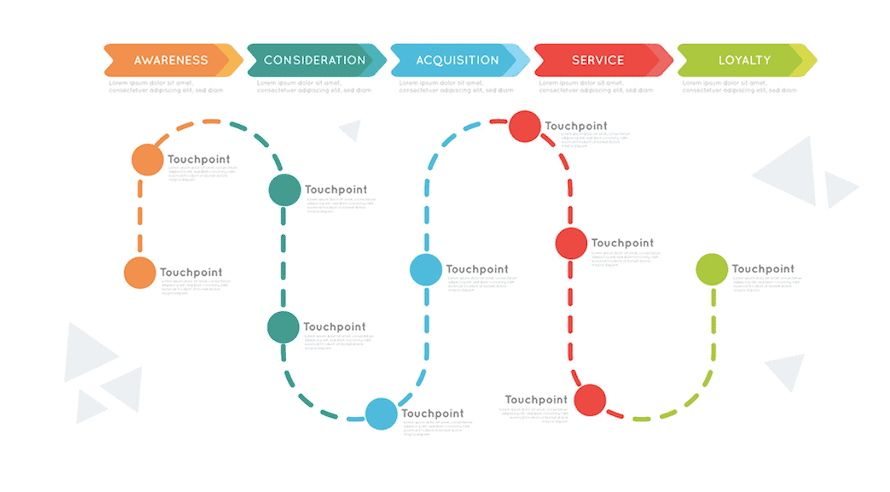By now, CEOs and COOs should know that CMOs have the shortest tenure of any position in the C-suite.
That’s been an established fact for years—however, in 2020 the average CMO tenure fell again, down to just 40 months on average. That’s the shortest it’s been since 2009.
For B2B CMOs, this probably comes as no surprise. The challenges of the CMO position are well-understood: a lack of clear directives, a frequent absence of meaningful performance indicators, and even a general misunderstanding of what marketing is capable of.
All of this can leave CMOs feeling like they’re constantly having to justify their budget, explain their decisions, and even, in some cases, feel pressured to put dollars toward tactics that may produce short-term results, but don’t actually move the needle.
Because we’re in the business of supporting CMOs (or acting in the role ourselves with our virtual CMO service), we’ve experienced the disconnect between CMOs and the rest of the C-suite firsthand.
Here are a few tips we’ve learned to help the C-suite understand what exactly you do, and why it matters.
Own your position as the expert in customer experience.
Data from Deloitte shows a striking lack of confidence among CMOs: according to a survey from 2019, only 5% of CMOs consider themselves high performers when it comes to impacting strategic decision-making, contributing to the overall direction of the business, and garnering support for their initiatives.
That’s a pretty serious problem.
Considering the difficulties inherent in the CMO position, perhaps it’s not surprising that so few believe they’re an influential and effective member of the C-suite.
And while you can’t change your colleagues’ minds overnight, one thing that every CMO can do is own their position as the expert in customer experience.
Too often, chief sales officers are seen as being the expert in this area. The truth, however, is that it’s you, the CMO, who is paying attention to what today’s customers want. They’re the ones who understand the importance of mobile-optimized ordering, and self-service support options, and seamless, omnichannel marketing experiences.
That’s not to mention that CMOs have a wealth of information to share about the B2B customer buyer journey. You know that the average number of touchpoints needed to make a sale is only going up—Forrester’s most recent research found that it’s sitting right around 27 — 27!!!!!

Perhaps even more crucially, brands are no longer the ones initiating those touchpoints. It’s not sales reaching out—it’s customers finding a thought leadership piece by your executive, then seeing an ad, then reading about you in an industry round-up, then checking your social profiles.
In other words: most of those touchpoints revolve around B2B marketing.
CMOs need to take ownership of the customer relationship, and make it clear that they’re doing so. That’s the whole purpose of marketing, after all, even if others around you don’t quite understand that yet.
You’re the expert. Focus on building the confidence to act like one.
Put your budget in terms the CFO will understand and appreciate.
One reason that CMOs often struggle to communicate their value to the rest of the C-suite is that marketing activities aren’t as easily quantifiable as, say, sales.
That’s especially true for activities that fall somewhere between B2B PR and marketing, like thought leadership or B2B influencer marketing.
In order to get around this challenge, try changing the way you design your budget: instead of categorizing by marketing activity (social media or influencer marketing, for example), categorize by organizational goal.
If your business is trying to increase lead generation by 10%, put that directly into the budget—and then connect the various marketing activities to that goal. If you plan to ramp up social media posting and content marketing to help reach that goal, put that down with an estimate of the total budget for social media and content that would go toward lead generation.
This will help the CFO, in particular, see more clearly how what your department does is critical to the company’s overall success. It will also help you design KPIs and analytics for each goal you’re supporting, making it easier to collect data that shows how what you’re doing is working.
Initiate more collaboration.
While CMOs have a wide sphere of expertise, that doesn’t mean they shouldn’t be collaborating. In fact, it’s one area where CMOs really do need to improve, according to the Harvard Business Journal.
It can be challenging to initiate those collaborations, especially if you’re already suffering from a lack of confidence due to the way you’ve been sidelined at your company. However, collaborating across departments can not only support your marketing initiatives, but also show the other departments that your contributions are invaluable to moving the business forward.
Successful collaborations also make it more likely that the CSO, CIO, and others will support your initiatives and ideas in the future, whether they’re cross-departmental or not.
Include analytics wherever you can.
This is a no-brainer, but of course one of the challenges facing CMOs is that the analytics don’t always tell the whole picture.
As an example, think of a traditional marketing tactic: the trade show. While a trade show may result in 100 new prospects to contact, how many of those prospects will actually convert? Not many. That means that the cost per lead acquisition is much, much higher than that for, say, a social ad or an ongoing content marketing campaign.
And yet, too many executives want their CMOs to show them fast, quantifiable results—100 new prospects—rather than trust them to make the decisions that will increase conversions in the long run, and result in a lower cost per customer.
This is where analytics tools can come in handy. Google Analytics is the easiest place to start, and every CMO should get familiar with it. If you need to track PR efforts—which are notoriously difficult to quantify—try a PR-specific analytics tool like Meltwater or Cision.
Using the right analytics tools can make a real difference when it comes time to report on your department’s efforts.
The CMO position is a tough one to be in, but there’s plenty you can do to help change the narrative and beat that 40-month average tenure! If you need a team to help support you, give us a call.







